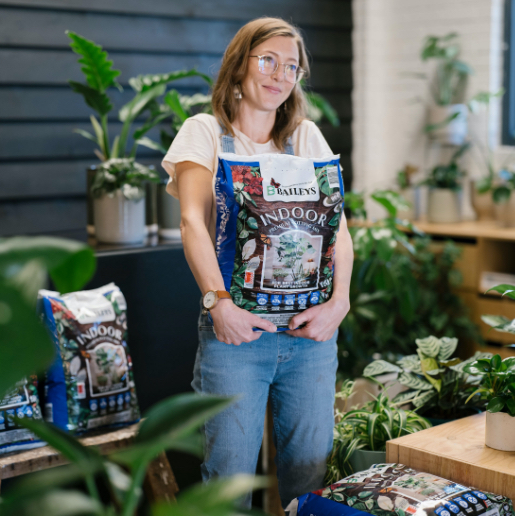
Join our Great Gardens Club!
Sign up to enjoy 15% off your first purchase from Baileys online. Plus, get our monthly WA gardening tips, latest news and promotions straight to your inbox.

Sign up to enjoy 15% off your first purchase from Baileys online. Plus, get our monthly WA gardening tips, latest news and promotions straight to your inbox.
Versatile and hardy Camellias are well suited to West Australian gardens. They are renowned for their beautiful glossy dark green leaves and profusion of amazing flowers in the cooler months when the garden can be a little dull. Soil preparation is the key for these acid loving beauties, and if established correctly in the right location - are easy to look after.
Choosing a Variety
There are thousands of Camellia cultivars, bred from Camellia Reticulata, Japonica and Sasanqua, the main three ornamental species. A mixture of Camellias can provide your garden with spectacular blooms from April through to October and Camellia Sasanqua and Japonica are best suited to Perth conditions.
Sasanqua
This group is the first to bloom, starting from April and continuing to July with a few cultivars going much later.
They feature small, dark green leaves and flower in colours from white, pinks to burgundy. Most flowers last only a couple of days on the bush but in such profusion there's a continuous display for long periods.
At maturity, plants range in size from medium shrubs to small trees, can be used in hedges, espaliered on fences, grown in the open garden where they are quite sun hardy, grown as container plants and recently ground cover plants have been developed.
Japonica
Perhaps the most common in gardens, Japonica have the widest range of flower form, colour and size. They are very adaptable and can thrive in a range of conditions.
Distinguished by larger, shiny, dense, dark green foliage throughout the year and flowering over many months - some cultivars of this species commence flowering in April, reaching a peak in late winter to early Spring and finishing in mid Spring.
Larger, yet slower growing - some can grow from 10 - 15 metres high but will happily withstand heavy pruning if a smaller plant is what you're after. Their slow growth habit means they can be grown in pots for many years and are also great for hedging.
Position
Sasanqua types will enjoy more sun than Japonica varieties, however all Camellias benefit from some shade plus protection from the harsh afternoon summer sun. Protection from hot, drying winds will also help them perform at their best.
Soil Preparation
Soil preparation is crucial when it comes to planting and then successfully growing camellias in WA. Most homes in coastal areas or in Perth on the swan coastal plain have alkaline soils, the opposite of what acidic loving Camellias like.
If soil is too alkaline, it will show up in pale or yellowish foliage, often with brown-black spots along the edges.
Test your soil before planting and adjust the pH if necessary, to between 5-6.5. Lowering pH can be achieved with the addition of organics, pine fines, peat and sulfur. Camellias thrive in well-drained soil, rich in organic matter so the addition of plenty of Baileys Soil Improver Plus to your existing soil should do the trick. Alternatively, plant in pots using Baileys Premium Potting Mix, which has a pH adjusted to 5.3-6.5 upon manufacture. Fresh mix will be required after 2 years and the best time for repotting is during August to September.
Newly planted Camellias will require regular watering until established, sometimes daily over the warmer months. Well mulched established plants are hardy and will survive happily on a few deep soaks a week. In extreme heat, extra watering is always appreciated.
Apply a top-quality wetting agent, such as Baileys Grosorb to garden beds and pots 2-3 time a year, particularly in early Spring and Summer to ensure even water penetration and drainage.
Keep well mulched to protect their shallow root system, help maintain pH and reduce water loss. Camellias love a pine bark-based mulch, such as Baileys Moisture Mulch.
Fertilising
Use a slow release, organic based fertiliser specifically formulated for acid loving, flowering plants, such as Baileys Rose, Camellia & Azalea. This is high in potassium, sulfur, iron and magnesium to promote blooms and rich dark foliage.
Feed once flowering has finished, usually in late winter to early Spring to fuel the new vegetative growth. Continue every few months in the growing season and when flower buds are developing.
Pruning
Pruning Camellias at the end of their flowering season is pivotal to ensure maximum growth each year and keeping the shape you're after. This is usually done in late winter to spring and mature trees can be cut back quite severely. Get to know the flowering season for your type - you don't want to prune when setting flower and miss their spectacular show.
Pest & Disease
Healthy Camellias usually have little trouble with pest and disease, but if you do have a problem with scale or mites, both can usually be treated with Neem Oil.